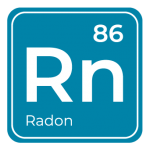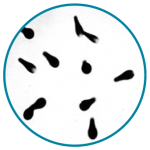












Data for the population of the USA
indicate the following:
Globally governments are obliged to
regulate exposure to radon
- Radon is the number one cause of lung cancer among non-smokers, according estimates of the Environmental Protection Agency 1
- Overall, radon is the second leading cause of lung cancer. Radon is responsible for about 21,000 lung cancer deaths every year. About 2,900 of these deaths occur among people who have never smoked
- Lung cancer now surpasses breast cancer as the number one cause of death among women. A smoker who is also exposed to radon has a much higher risk of lung cancer
- A radon level (concentration) of 48 becquerel per cubic metre is considered as average – if 1,000 people who smoked were exposed to this level over a lifetime, about 20 people could get lung cancer
- If 1,000 people who smoked were exposed to radon at a concentration of 74 becquerel per cubic metre over a lifetime, about 32 people could get lung cancer (which compares to 6 times the risk of dying from poison)
- In the northern hemisphere it is common not only to continuously monitor the levels of radon at workplaces but also in most homes
- Regulations for South Africa (see Regulation Gazette No. 28755, 28 Apr 2006, Vol.490 No. 8454) are enforced by the National Nuclear Regulator
Radon-222 is formed from uranium-238 in the uranium decay series
It is a colourless, naturally occurring, radioactive noble gas that is formed from the decay of uranium. It is one of the heaviest substances that are gases under normal conditions and is considered to be a health hazard. Radon is a significant contaminant that affects indoor air quality worldwide. Radon gas from natural sources can accumulate in buildings with the concomitant potential negative health effects.
There are many analysis methods for radon, nuclear track analysis being one. Nuclear track analysis utilises specific polymer materials sensitive to α-particles. CR-39 is such a material (plastic) and its the same polymer used in plastic lenses for glasses.
Image: Nuclear tracks made visible by etching in concentrated hot NaOH and the number of tracks are directly proportional to radon concentration / exposure. CR-39 viewed @ 20 X enlargement under a microscope showing “alpha tracks”.

CR39 is a polymer of diethylene glycol bis (allyl carbonate). The monomer is shown above.



